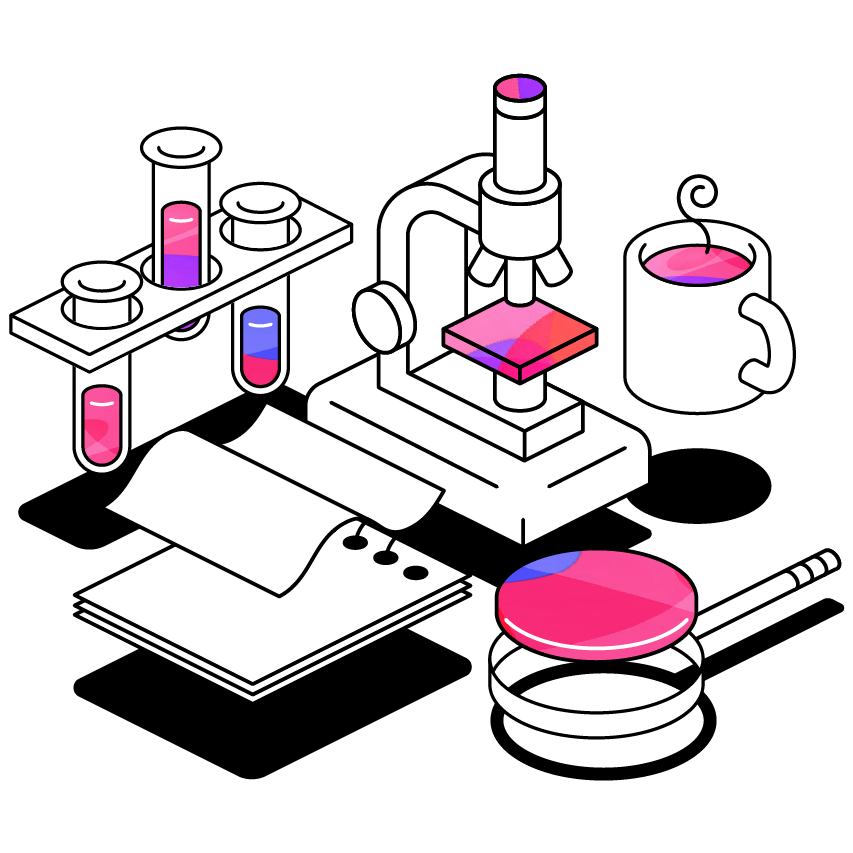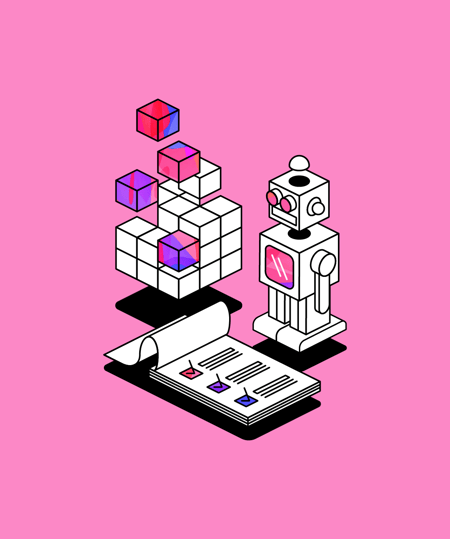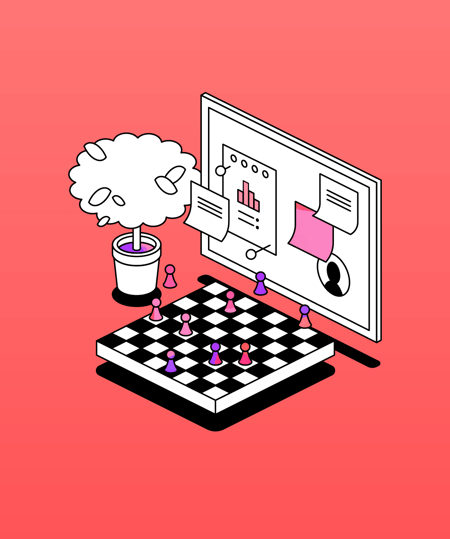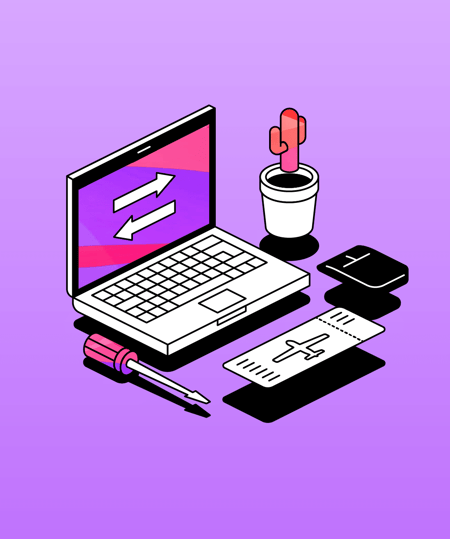Glean hack week - developing a Minimal Loveable Feature
Our Glean Engineering team recently took time out of their busy schedules to run a hack week, designed to build innovative solutions and unleash their creativity. Engineering Manager, Mala Benn, is here to tell us how they got on.
 3 min read
3 min read
 Published: 7 Jun 2024
Published: 7 Jun 2024
 Mala Benn
Mala Benn


At Glean, hackathons are eagerly anticipated by our Engineering team as they provide an invaluable opportunity to build innovative solutions and unleash our creativity.
A hackathon is an event where people come together to collaborate intensively over a short period, typically a few days, to create innovative solutions or projects, often involving technology but accessible and beneficial to everyone.
As a newbie, I was excited to get involved in the running of this hackathon as it would give me a chance to learn more about the product and meet more people.
While our previous hackathons have been shorter in duration, this time we dedicated an entire week to fully immerse ourselves in this creative process
Our aim was to encourage creativity, innovation, customer interaction and experimentation within Glean.
This event was designed to bring together the disciplines across the Technology function, including Engineering, Data, UX Design, Product Marketing, Product Management and Customer Support, to create "Minimal Loveable Features" that can be tested with users and customers. The primary objective being receiving feedback on their value.
The theme for the week was “Minimum Lovable Product (MLP)”, which is an initial offering that users love from the start. It represents the minimum that is required for customers to adore a product, rather than merely tolerating it.
Our goals
It was important for us to set clear goals for the hack week. Having clear milestones would transform the event from mere brainstorming sessions into structured, purposeful events that would drive meaningful innovation and tangible outcomes.
Leadership across the different disciplines agreed to the following goals:
- Develop testable ideas that can be validated by users and customers via branches, early access or feature flags.
- Collaborate across teams to generate innovative ideas and solutions.
- Foster a culture of experimentation and learning.
- Enhance the learning experience for Glean users.
- Improve the value of Glean for users and customers.
How we prepared
The hack week was announced three weeks ahead of time. The goal was to let teams self-organise, and some lightweight guidance sped up the process.
Ideas
A virtual whiteboard was created where anyone across the Technology function could input ideas, themes around challenges or improvements that could be worked on.
From this foundation, any team could use these initial thoughts as a basis to pick their idea.
Forming teams
Using the same whiteboard, teams were formed and registered, with call outs issued for more team members and individuals who were looking to join.
To encourage everyone to take part, space was created within squads and normal workflows were put on hold to allow guilt free participation. It was voluntary, but if anyone felt they couldn’t commit, leadership tried to free up their time.
Some disciplines couldn’t dedicate the whole week to hack week but agreed to be available as consultants during the week for shorter bursts of time.
Running the hack week
The hack week ran virtually, enabling remote employees to participate, starting with a kick off on the Monday morning and finishing with the demos on the Friday afternoon.
We also had an optional day in the office together when teams could decide if they wanted to work co-located for which Glean provided lunch, to bring people together and promote collaboration.
Demos and judging
The demos were the highlight of the week and everyone involved was looking forward to seeing the outcomes
The judging panel consisted of three members of the Glean Exec, including Glean founder, Roger Tucker, Co-CEO, Dave Sankey, and COO, Chrissie Leahy.
Each of the six teams had ten minutes to present. During this time the project scope was outlined and questions were asked by the panel.
Judging criteria:
- Impact - impressiveness and desirability, how likely would the launch be to go viral with the target user?
- Defensive - moat and competitor "smashdown", how well does this build on originality? How well does this leverage Glean’s USP or dataset?
- Delight - does it build on humour? Does using this bring target users joy, laughter, wonder?
- Feasible - how likely is this to be technically and commercially possible to deliver?
- Value - does it improve the value of Glean for users and customers?
Evaluation summary
After the demos, the judging committee spent time discussing each showcase and decided on the winners and runners up, with teams presented with a prize.
One effective action I took was to provide each team with detailed written feedback. This included insights from the judges and suggestions for further development of their ideas.
Outcomes and next steps
It was a really great experience to get involved in and to see the excitement from everyone, including the judges.
Running and participating in a hack week has infused energy into all participating teams, with a multitude of benefits including fostering innovation, enhancing skills, improving teamwork and boosting morale.
Here are some of the messages sent to me from individuals involved…


We found that by making the “validation of ideas by users” an objective, it really encouraged teams to get closer to the user, understanding their challenges and considering them as part of the development of their ideas.
Also, making “how well does this build on originality?” a part of the judging criteria, meant that teams researched competitor products and how their ideas might be perceived.
This proved to be a valuable learning experience for Engineers who might not always think about those impacts when doing normal feature development.
Moving forward, I’m working to collate feedback on what worked well versus what could be improved. We’re also evaluating how often we should run hackathons in line with the organisation calendar to determine the best time to run our next event.
Last of all, we're now looking at some of the excellent ideas and how we could incorporate them into Glean in the next few months. So watch this space!
More from Tech Blog
View All
 2 min read
2 min read
The engineer housewife: An unconventional role for tech companies
Here we discuss the concept of an 'Engineer Housewife' - a role focused on maintaining and organizing the engineering environment to boost efficiency and collaboration, ultimately allowing engineers to focus on innovation.

 4 min read
4 min read
Glean Engineering away day: a winning formula for success
Our Head of Engineering, Mala Benn, sheds light on the recent Glean Engineering away day and shares her 10 top tips that made the day a roaring success.

 6 min read
6 min read
Dart Type Promotion
In this article, we'll walk you through a common issue with dart type promotion, showing you why it occurs and some ways to solve it.





